

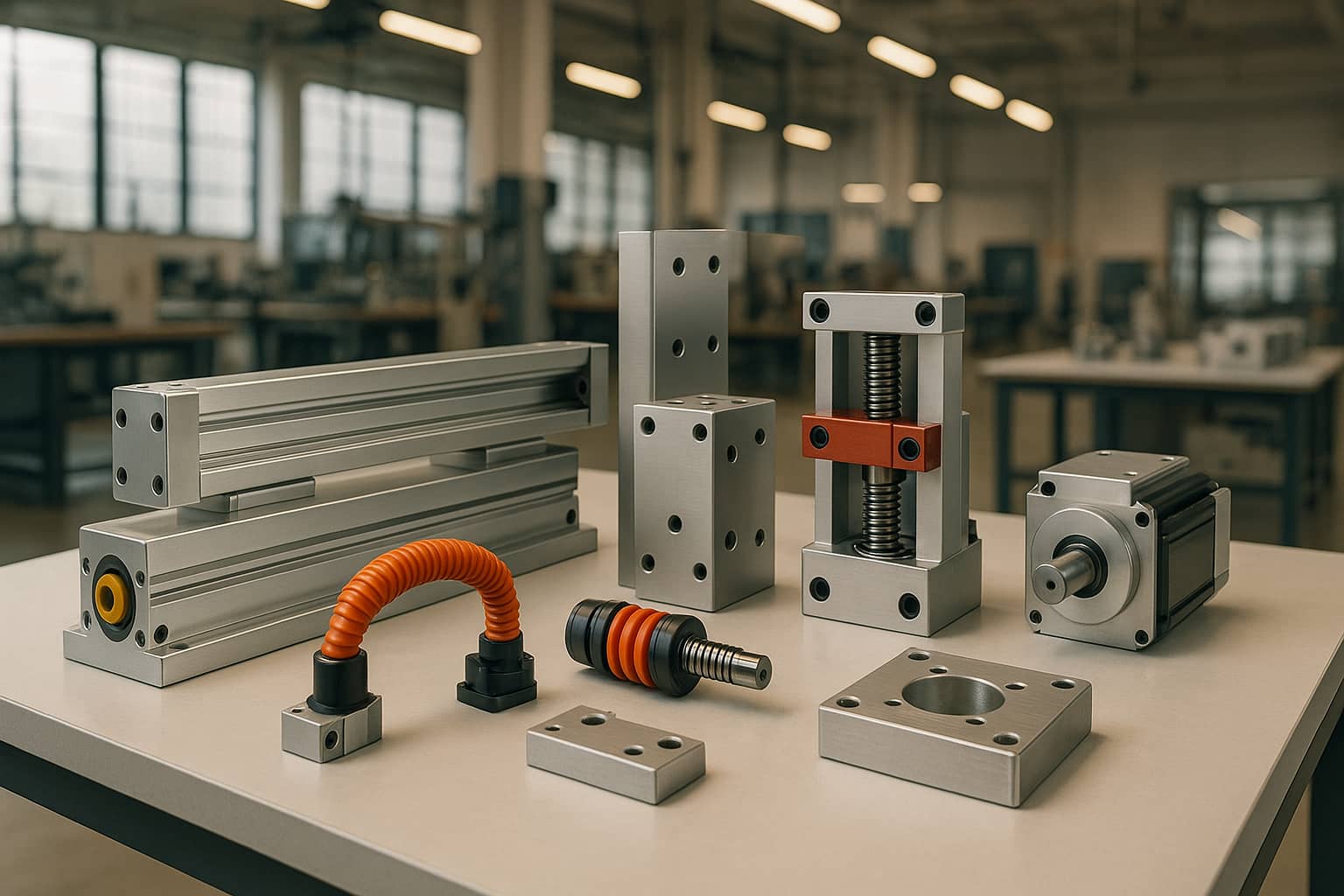
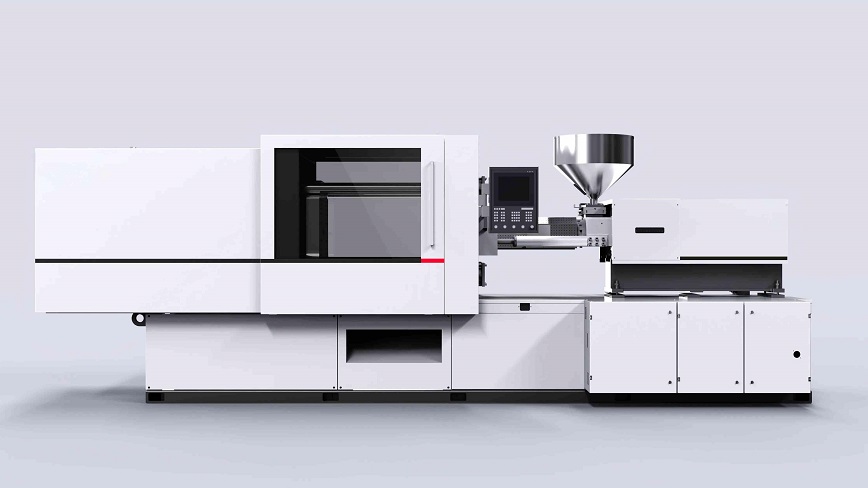
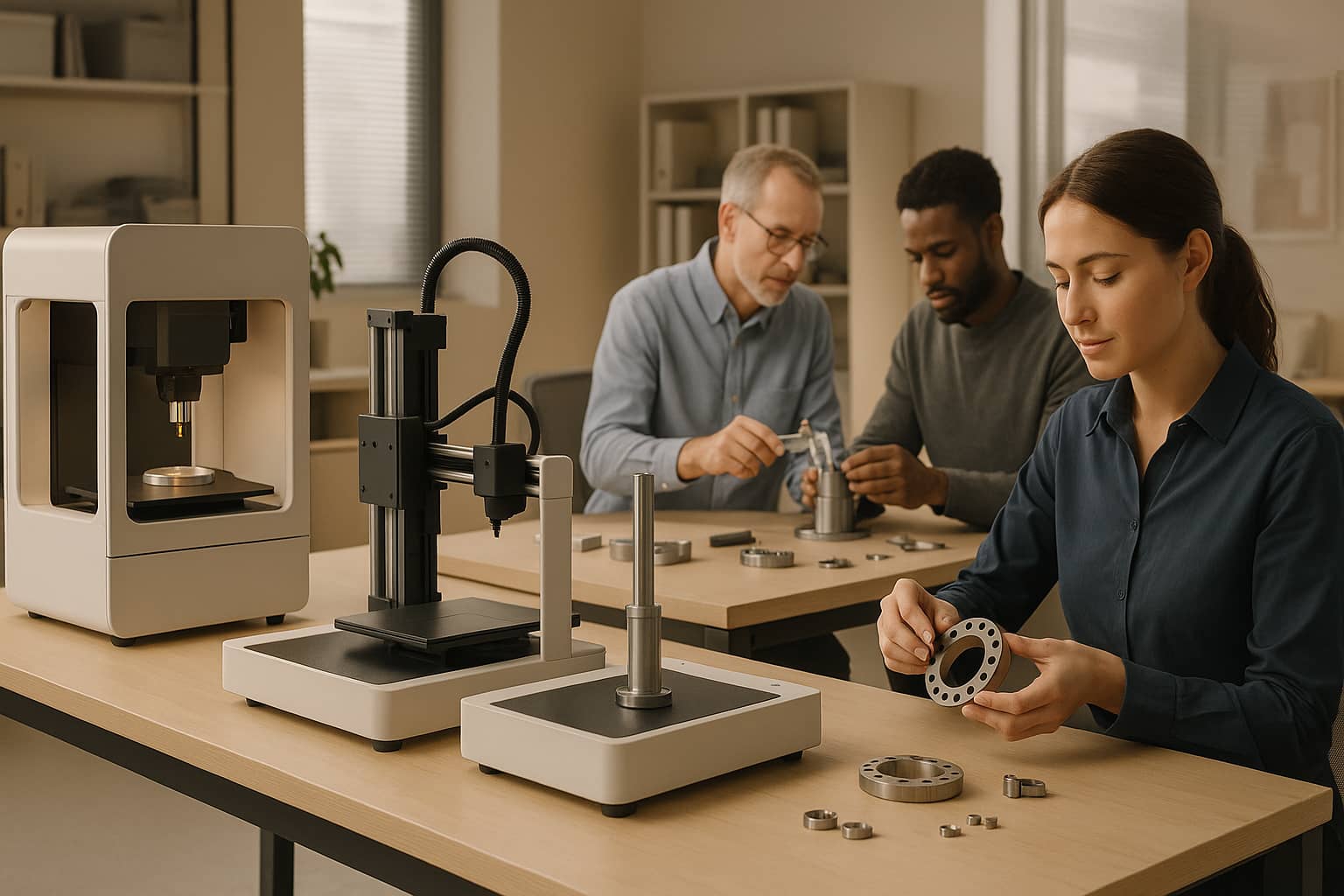
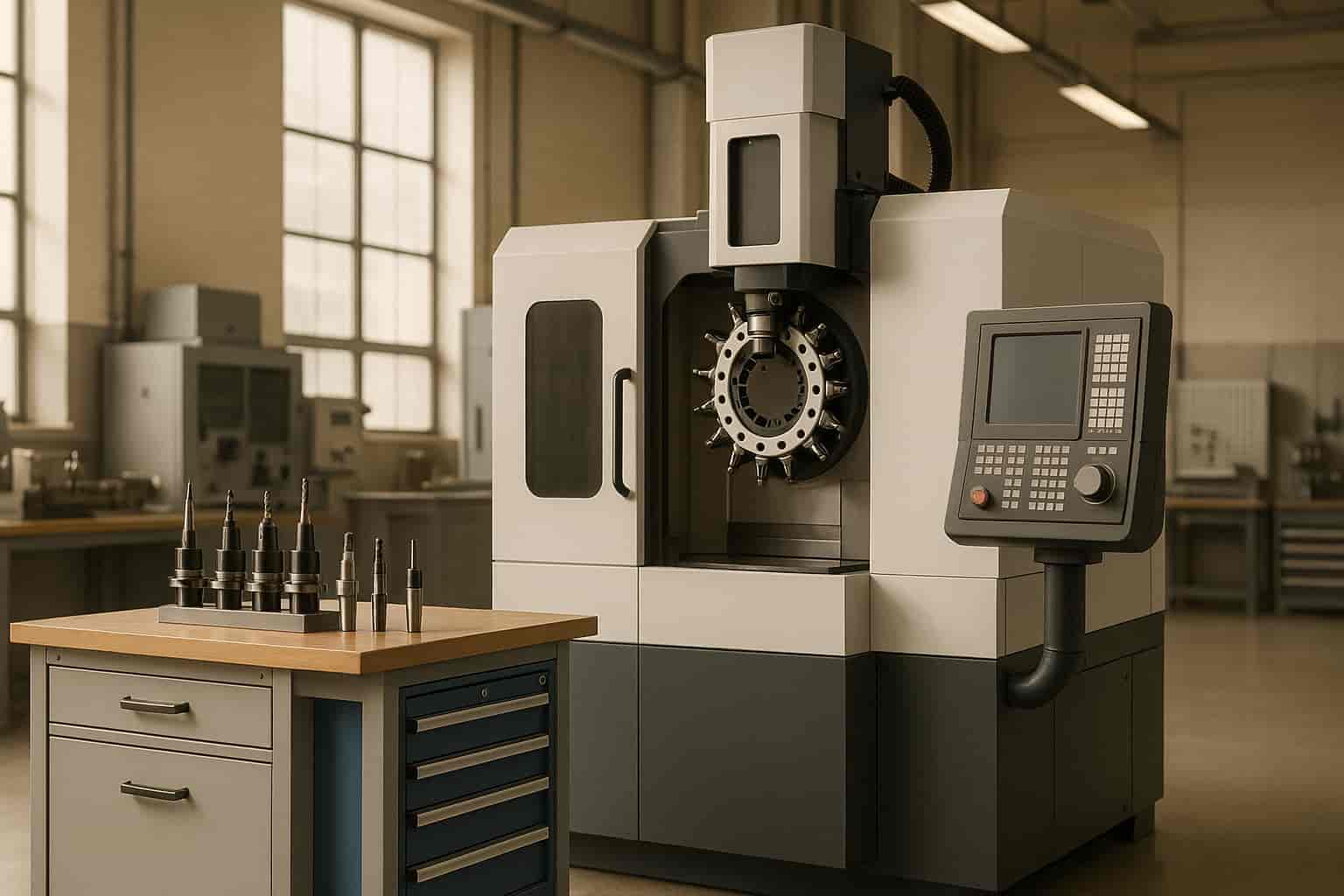
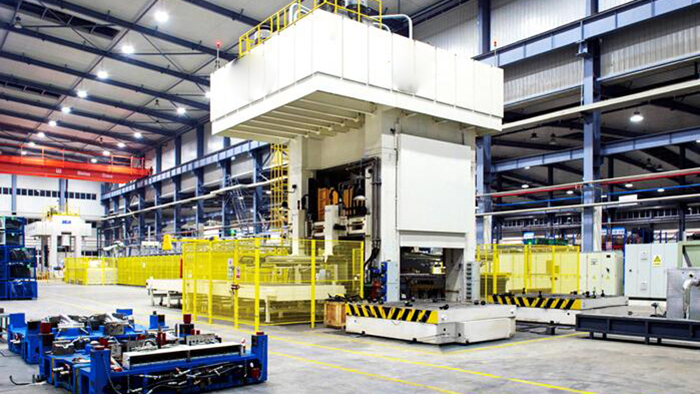

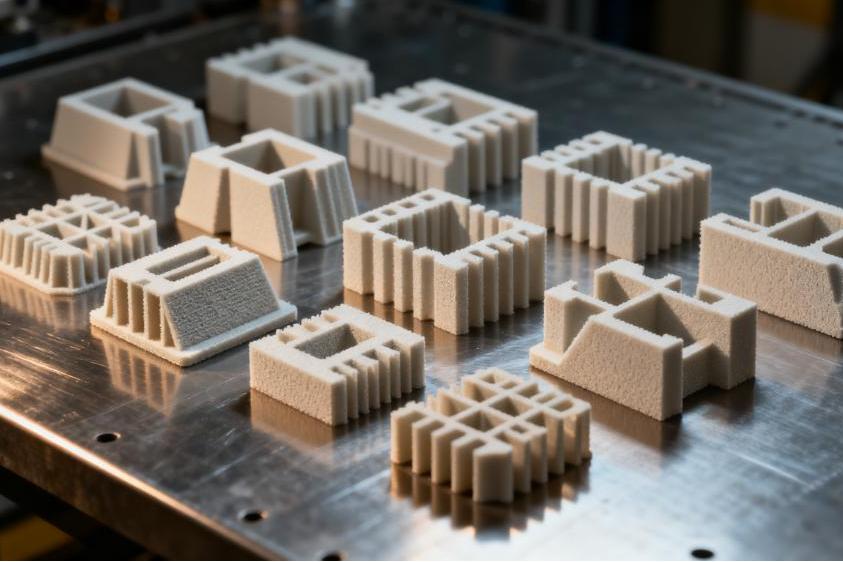
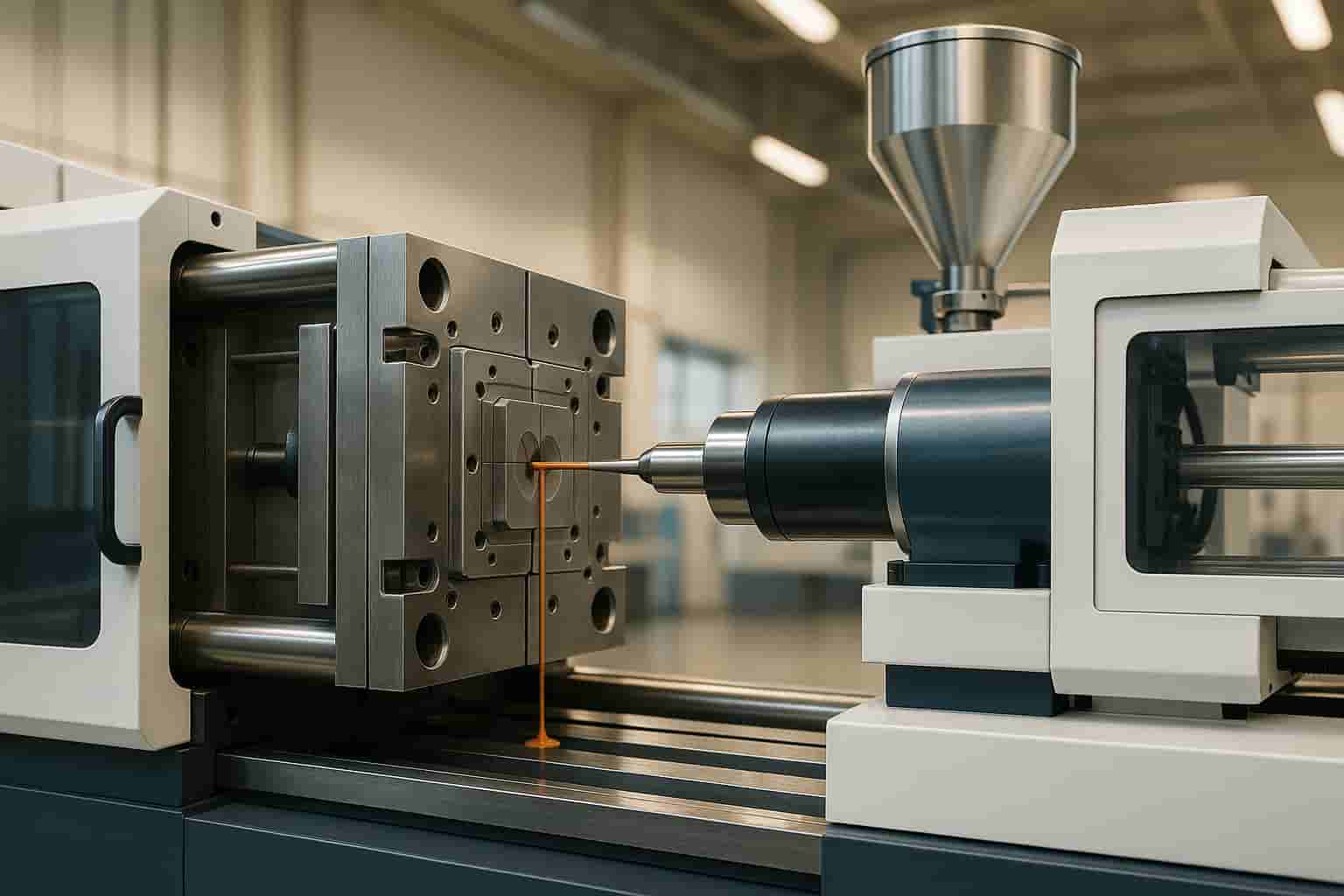
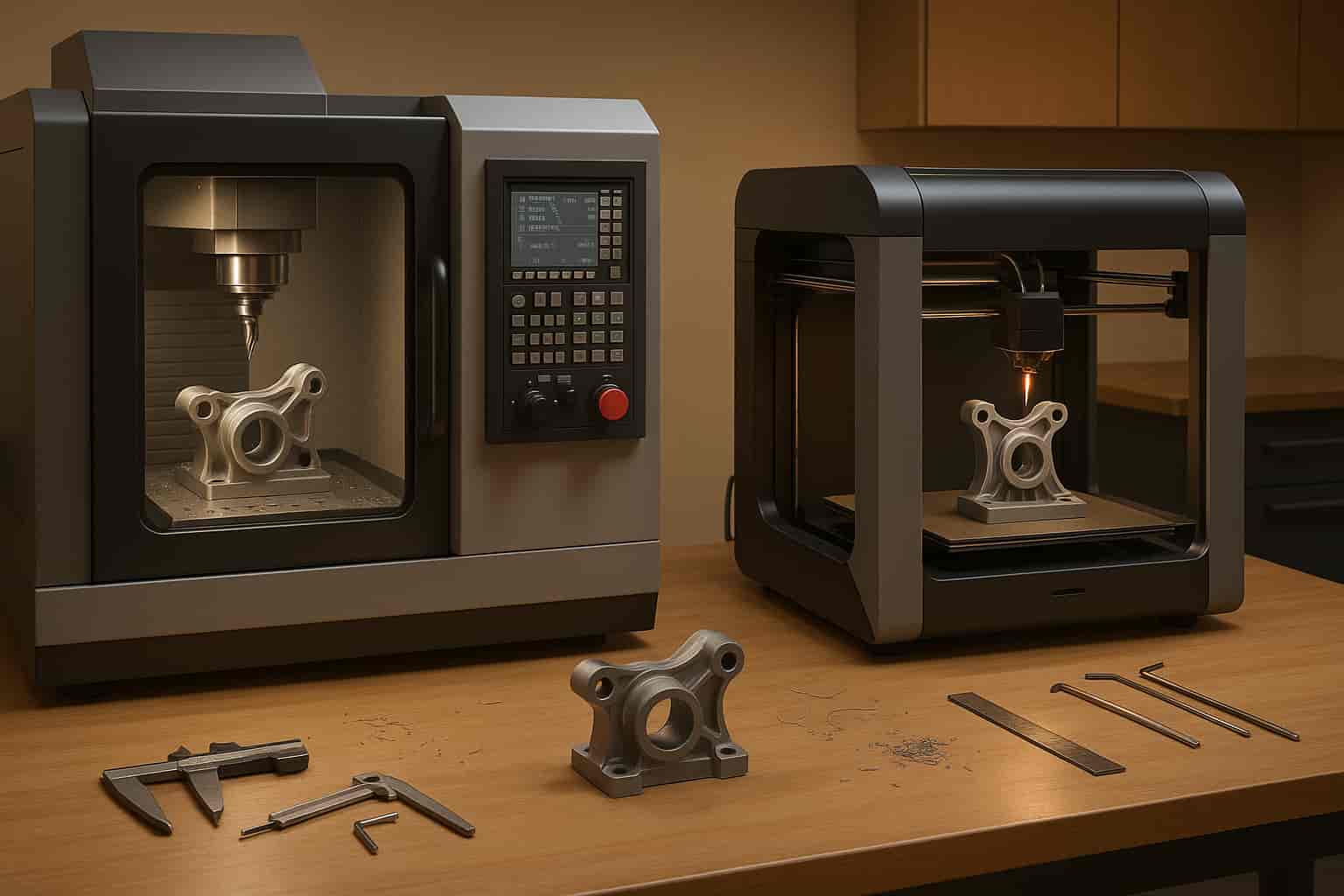
In Australia, choosing the right die casting alloy is critical due to the country’s diverse climates - from the salty air of coastal regions to the dry, fluctuating temperatures inland. Corrosion-resistant alloys reduce maintenance costs, extend product lifespans, and ensure reliable performance under harsh conditions. Here's a quick breakdown of the top 5 corrosion-resistant die casting alloys:
Each alloy is designed to withstand specific Australian conditions, whether it's salt spray, industrial chemicals, or temperature swings. Selecting the right material ensures long-term reliability and cost-effective performance.
Choosing the right corrosion-resistant alloy isn't just about picking one with a high corrosion rating. It’s about understanding how an alloy’s properties will interact with Australia's unique and varied environments. From chemical composition to surface finish, every detail plays a role in ensuring the alloy meets the demands of your application.
Chemical composition is the cornerstone of corrosion resistance. For instance, aluminium alloys naturally develop a thin oxide layer when exposed to oxygen. This layer acts as a shield, preventing further oxidation. However, specific elements like silicon and copper need to be carefully controlled. While silicon can enhance certain properties, too much copper can reduce corrosion resistance, particularly in marine environments where salt exposure is a concern.
Effective passivation is another critical factor. This refers to an alloy’s ability to quickly regenerate its oxide layer after being scratched or worn. This self-healing property is essential for components that face frequent handling or abrasion, ensuring long-term protection.
The microstructure of an alloy also plays a significant role in its performance. Alloys with a fine, uniform grain structure tend to resist corrosion better than those with coarse or irregular grains. Achieving this structure often depends on optimised heat treatment and cooling processes. Mastars' precision-controlled methods ensure a consistent microstructure, enhancing corrosion resistance.
Australia’s diverse climates present unique challenges for alloy selection. In coastal or marine areas, salt spray and high humidity demand alloys with strong chloride resistance to prevent pitting corrosion. On the other hand, industrial settings may expose materials to harsh chemicals like acids, alkalis, or solvents. Even outdoor applications must contend with UV exposure, temperature swings, and seasonal moisture. For example, the heavy tropical rains of Darwin and the Mediterranean climate of Adelaide require materials that can maintain their protective properties under these varying conditions.
To ensure alloys are up to the task, Mastars employs rigorous testing protocols that mimic real-world Australian environments. Salt spray testing exposes materials to continuous salt fog, tailored to the application’s needs. Cyclic corrosion testing alternates between salt spray, humidity, and dryness to replicate daily environmental changes. Additionally, electrochemical testing measures corrosion potential and current density, providing detailed insights into how an alloy will perform over time, especially when different metals come into contact.
The surface finish achieved during die casting also impacts corrosion resistance. A smooth surface with minimal defects reduces the chances of corrosion starting. Mastars' precision die casting technology ensures low porosity and a consistent finish, further enhancing the alloy's durability.
Cost is another key consideration. While premium alloys with excellent corrosion resistance may have a higher upfront price, their longer service life and reduced maintenance costs often make them a worthwhile investment. This is particularly true for critical applications where failure isn’t an option.
When developing custom solutions, Mastars takes a comprehensive approach. Rather than focusing on isolated factors, they consider the entire service environment - taking into account thermal expansion, mechanical stress, and chemical exposure. This ensures the chosen alloy not only resists corrosion but also meets all the other demands of its intended use.
Aluminium Alloy A360 is a standout material when it comes to die casting applications that demand corrosion resistance. Known for its balance of performance and cost-effectiveness, this alloy has become a go-to option across a range of Australian industries. Its composition ensures reliable performance in tough environments while offering the flexibility needed for intricate die casting designs.
The corrosion resistance of A360 can be credited to its carefully balanced composition, which includes around 9.0–10.0% silicon and a low copper content (typically less than 0.6%). Keeping copper levels low is crucial because copper can trigger galvanic cells, accelerating corrosion - especially in marine environments, a key concern for applications along Australia’s vast coastline.
Salt spray tests reveal A360’s ability to resist pitting and maintain a uniform microstructure. The silicon content plays a key role here, promoting a more even microstructure during solidification. This uniformity reduces the formation of intermetallic phases, which are often the starting points for corrosion. As a result, A360 delivers predictable and reliable long-term performance. Beyond its corrosion resistance, the alloy’s mechanical properties further enhance its suitability for demanding applications.
A360 offers a strong combination of tensile strength (320–380 MPa), yield strength (160–200 MPa), and elongation (2–4%) in its as-cast condition. This balance provides both rigidity and flexibility, eliminating the need for additional heat treatment.
The alloy also stands out for its impact resistance, making it ideal for components that face shock loads or vibrations. Proper die casting techniques create a fine grain structure, which contributes to its toughness. This makes A360 a dependable choice for automotive and industrial applications, where durability and reliability are critical under Australia’s varying climate conditions.
A360’s properties make it particularly well-suited to Australia’s diverse environmental challenges. For instance, in tropical areas like Queensland’s coast, where high humidity, salt exposure, and elevated temperatures are common, A360’s low copper content and stable oxide layer resist pitting corrosion effectively.
In inland regions, where extreme temperature fluctuations and harsh UV exposure are the norm, A360’s thermal stability ensures minimal changes to its properties. It can handle everything from the intense heat of central Australia to the cooler, milder conditions of Tasmania.
Southern Australia’s Mediterranean climate brings its own challenges, with seasonal moisture variations creating wet-dry cycles that can accelerate corrosion. A360’s ability to regenerate its protective oxide layer ensures ongoing protection, even when surface films are compromised by condensation or evaporation.
A360 is a versatile alloy widely used in Original Equipment Manufacturing (OEM). In the automotive sector, it’s a top choice for components like transmission housings, engine brackets, and structural parts that need to combine corrosion resistance with dimensional stability. Its excellent castability allows for intricate designs with thin walls, making it ideal for weight-sensitive automotive applications.
In electronics, A360 is frequently used for heat sinks, equipment housings, and mounting brackets. Its combination of good thermal conductivity and corrosion resistance makes it perfect for outdoor telecommunications equipment and solar panel mounting systems, both of which are gaining traction in Australia’s renewable energy sector.
Marine and coastal applications also rely heavily on A360. From boat fittings and dock hardware to coastal infrastructure components, the alloy’s resistance to chloride-rich environments ensures durability. Precision die casting ensures these parts meet the strict tolerances needed for long-term reliability in harsh marine settings.
Industrial equipment manufacturers also turn to A360 for pump housings, valve bodies, and fluid handling components. Its resistance to many industrial chemicals, paired with strong mechanical properties, makes it a preferred material for mining, agricultural, and manufacturing equipment used throughout Australia.
Aluminium Alloy 360 is a next-generation die casting material, designed to offer exceptional corrosion resistance and meet the unique demands of Australian OEM manufacturing. Its properties make it a reliable choice for applications requiring long-term durability in challenging environments.
The standout feature of Aluminium Alloy 360 is its ability to resist corrosion. This is achieved through a carefully optimised chemical composition that minimises elements known to accelerate wear. The alloy forms a quick and protective oxide layer, acting as a shield against further oxidation. This is particularly beneficial in Australia's coastal areas, where salt spray and marine conditions can rapidly degrade materials. A fine-tuned microstructure ensures consistent protection across the alloy’s surface.
Aluminium Alloy 360 doesn’t just stop at corrosion resistance - it also delivers impressive mechanical performance. Its combination of strength and ductility ensures components retain their structural integrity, even when exposed to thermal changes. The alloy is also highly resistant to fatigue, making it a dependable option for applications that involve repeated stress or load. This durability makes it well-suited for the wide-ranging environmental conditions found across Australia.
Australia’s varied climates, from the humid coastal regions to the dry inland areas, present unique challenges for materials. Aluminium Alloy 360 is engineered to perform reliably across these extremes. In marine and humid environments, it resists corrosive elements while maintaining stability under fluctuating temperatures. In regions with high temperatures and significant day-to-night thermal shifts, it remains dimensionally stable and dependable, ensuring components perform consistently.
Thanks to its versatile properties, Aluminium Alloy 360 is widely used in OEM manufacturing. In the automotive industry, it’s a go-to material for engine mounts, suspension brackets, and transmission cases - components where strength and durability are crucial. It’s also a solid choice for electronic and telecommunications housings, offering protection and longevity. For marine applications, such as boat fittings and dock hardware, its resistance to saltwater corrosion is invaluable. Additionally, industrial equipment like pump housings and valve components benefit from its ability to withstand long-term wear and tear.
Zamak 3 and Zamak 5 stand out in die casting applications thanks to their strong resistance to corrosion. Their durability is largely due to the use of 99.99% pure zinc, which helps prevent intergranular corrosion, including issues like zinc pest. This high level of purity ensures these alloys perform well even in harsh environments. Zamak 5, with its added copper content (about 1%), offers improved strength while maintaining similar corrosion resistance to Zamak 3.
Zamak 3 is known for its excellent dimensional stability and smooth surface finish, making it ideal for applications requiring precision. On the other hand, Zamak 5 benefits from its copper content, which enhances tensile strength and hardness. This combination of strength and workability makes both alloys reliable choices for demanding environments.
These alloys are well-suited to Australia's varied climates. Their corrosion resistance is particularly effective in coastal areas with high salt exposure, while their stability ensures reliable performance in regions with fluctuating temperatures.
Zamak alloys are widely used in OEM manufacturing due to their tailored properties. Mastars utilises these alloys for automotive components like door handles and decorative trim, where durability and precise finishes are essential. Their dimensional stability and casting precision also make them ideal for electronic housings, ensuring a secure fit and protection for sensitive parts. In marine hardware, such as boat fittings and deck components, the alloys' corrosion resistance is invaluable for enduring saltwater exposure. Additionally, they are a go-to choice for industrial applications like pump components, valve bodies, and other small machinery parts, where consistent performance and precision are critical.
The ADC5 aluminium alloy is well-regarded for its ability to withstand corrosion, thanks to its carefully balanced composition of aluminium, silicon, and magnesium. With silicon levels typically between 4.5% and 6.0%, the alloy naturally forms a protective oxide layer that guards against environmental damage. This layer is particularly effective in shielding the metal from atmospheric corrosion and moisture-related wear. Meanwhile, magnesium content, which ranges from 0.4% to 0.6%, bolsters the material's resistance to corrosion while preserving its structural durability over time.
This alloy's stable electrochemical properties also reduce the risk of galvanic corrosion when paired with other materials, making it a reliable choice for applications requiring long-term durability and performance.
ADC5 strikes a balance between strength and castability, boasting tensile strengths of 240–280 MPa and yield strengths of 160–200 MPa. Its high fatigue resistance and dimensional stability ensure that components made from this alloy maintain their shape and function under stress. The silicon content plays a key role here, forming intermetallic compounds during the solidification process that enhance the alloy's mechanical properties.
One standout feature is its dimensional stability, which minimises shrinkage during cooling and ensures excellent resistance to thermal cycling. This means parts retain their precise dimensions and are less prone to warping, even in intricate designs. These mechanical qualities make ADC5 an excellent performer in Australia's varied and often challenging climate conditions.
Australia's climate is famously diverse, ranging from humid coastal areas to the dry, arid interior. ADC5 aluminium alloy proves its worth across this spectrum. In coastal cities like Sydney and Perth, where high humidity and salt spray are constant challenges, the alloy's corrosion resistance ensures reliable, long-lasting performance.
Its thermal stability is another advantage, allowing it to endure Australia's temperature extremes without losing its mechanical properties. From scorching summer heat to cooler regions, ADC5 remains resilient. This feature is particularly beneficial for outdoor applications and automotive parts that face prolonged exposure to intense UV radiation. Mastars has rigorously tested ADC5 to ensure it meets the demands of Australia's harsh environments.
With its combination of corrosion resistance and mechanical stability, ADC5 is a go-to material for demanding OEM manufacturing needs. Mastars utilises this alloy in a variety of applications where precision and durability are critical.
In the automotive industry, ADC5 is commonly used for transmission housings, engine brackets, and suspension components. These parts benefit from the alloy's ability to maintain dimensional accuracy under high temperatures and resist road salt corrosion.
The electronics sector also relies on ADC5 for components like heat sinks and equipment enclosures. Its thermal conductivity and resistance to corrosion make it ideal for sensitive applications, including telecommunications equipment, where consistent performance is essential in Australia's varied climate.
Marine applications are another area where ADC5 shines. From boat engine components to propeller housings and deck hardware, the alloy demonstrates exceptional resistance to saltwater corrosion. Its casting properties allow for complex shapes while maintaining the strength needed for the marine environment.
In industrial equipment, ADC5 is used for manufacturing pump housings, valve bodies, and machinery brackets. These components demand both mechanical reliability and resistance to corrosion, making ADC5 a trusted choice for Australian manufacturers who need equipment that can handle a wide range of environmental conditions.
Aluminium Alloy ADC6 is highly regarded for its resistance to corrosion, making it particularly well-suited for Australian conditions. Thanks to its magnesium content, the alloy forms a stable oxide layer that shields it from damage caused by saltwater exposure, industrial chemicals, and airborne pollutants. This protective layer ensures durability, even in harsh marine or industrial settings, providing dependable performance while maintaining its mechanical strength.
ADC6 strikes a balance between strength and flexibility, allowing it to withstand repeated stress and heavy loads without compromising the integrity of the components it is used to create.
Australia's diverse climate - ranging from coastal areas with salty air to industrial zones with chemical exposure - demands materials that can endure extreme conditions. ADC6 rises to this challenge by offering consistent protection and durability. Its ability to perform reliably under fluctuating temperatures and prolonged outdoor exposure makes it an excellent choice for manufacturing in Australia.
Mastars incorporates ADC6 into a variety of products, including marine equipment, automotive components, and enclosures for outdoor electronics. By harnessing the alloy's strengths, Mastars produces components that are built to last and tailored to withstand Australia's demanding environmental conditions. This ensures high-quality, durable products that meet the needs of both marine and industrial applications across the country.
Here’s a comparison of five corrosion-resistant die casting alloys, tailored to meet various environmental and mechanical demands.
Table 1: Alloy Comparison
| Alloy | Corrosion Resistance | Key Mechanical Properties | Australian Environmental Performance | Primary Applications |
|---|---|---|---|---|
| Aluminium A360 | Excellent resistance to general corrosion, particularly in atmospheric conditions | High strength-to-weight ratio, good dimensional stability, and excellent castability | Performs exceptionally well in coastal and urban areas, resisting salt spray and industrial pollutants | Automotive components, electronics housings, telecommunications equipment |
| Aluminium 360 | Very good corrosion resistance, boosted by silicon content | Moderate strength, excellent fluidity during casting, and good machinability | Reliable across diverse climates, suitable for both inland and coastal regions | Consumer electronics, appliance components, decorative hardware |
| Zinc Alloys (Zamak 3/5) | Good corrosion resistance, enhanced with proper surface treatments | High dimensional accuracy, excellent surface finish, and superior impact strength | Performs well in most conditions but requires protective coatings in severe marine environments | Precision components, automotive trim, door handles, decorative fittings |
| Aluminium ADC5 | Excellent corrosion resistance, enhanced by copper content | High tensile strength, good thermal conductivity, and moderate ductility | Excels in harsh conditions, handling extreme temperature variations with ease | Heavy-duty automotive parts, industrial machinery, heat exchangers |
| Aluminium ADC6 | Superior corrosion resistance due to its magnesium content, which forms a stable oxide layer | Balanced strength and flexibility with excellent fatigue resistance | Outstanding durability in marine and industrial environments, effectively managing temperature fluctuations | Marine equipment, outdoor electronics enclosures, automotive components |
This comparison highlights the strengths of each alloy, making it easier to select the right one for specific needs.
Aluminium alloys are particularly suited to Australia’s diverse environments, thanks to their excellent corrosion resistance. Both ADC5 and ADC6 excel in harsher conditions, while A360 and 360 are reliable for general-purpose use.
Zinc alloys stand out for applications requiring precision and a superior surface finish. They’re also energy-efficient due to their lower melting temperatures, making them ideal for large-scale production.
For Australian OEM manufacturing, the choice of alloy depends on striking the right balance between environmental exposure and mechanical performance. This guide offers a clear path to selecting the best material for demanding applications.
Australia's industrial landscape is as varied as its geography, stretching from corrosive coastal regions to the tough conditions of inland mining. This diversity calls for materials that can stand up to extreme environments. Mastars leverages integrated OEM manufacturing and prototyping to create components that are built to endure these challenges.
Australian industries operate under strict performance standards and metric requirements. Mastars ensures that all components meet these exacting demands, delivering products that are durable and precise, even in the face of harsh environmental conditions.
For marine applications along Australia's vast coastline, alloys like ADC5 and ADC6 are particularly effective. These materials are resistant to chloride exposure and marine bioactivity, making them ideal for tropical regions with high temperatures and humidity. By adhering to these local standards, Mastars directly supports the unique needs of Australia's key industries.
Australia's mining sector relies on materials that can handle heavy-duty processing and extreme conditions. ADC5 is well-suited for inland operations, where temperature fluctuations are common. On the other hand, ADC6, with its protective oxide layer, excels in corrosive coastal environments, making it indispensable for offshore platforms and other marine applications.
Mastars' rapid prototyping capabilities allow for quick testing and validation of alloys before mass production. Using advanced 3D printing and CNC machining, the company can iterate designs swiftly, even for complex projects.
Zinc alloys, which melt at lower temperatures than aluminium alloys, offer an energy-efficient solution during the die casting process. This makes them a practical choice for inland applications where environmental exposure is less intense.
Australia's varied climates demand thorough quality control. Mastars employs standardised testing methods, such as salt spray and temperature cycling tests, to ensure each alloy's stability and resistance to corrosion. This rigorous approach guarantees reliable performance in both coastal and inland environments.
The choice of alloy plays a crucial role in both manufacturing costs and the lifespan of components. While zinc alloys are more economical upfront, aluminium alloys often prove more cost-effective over time. Their durability in harsh conditions reduces maintenance needs and extends service life, offering long-term savings for industries operating in challenging environments.
Selecting corrosion-resistant die casting alloys is a crucial step for industries across Australia, given the country's varied and often harsh environments. From the salty air of coastal areas to the extreme temperature shifts in inland mining regions, corrosion leads to substantial annual losses due to asset wear, early failures, and unplanned maintenance.
Australia's vast coastline and sprawling infrastructure face unique environmental stresses, making the right choice of alloy a necessity. Corrosion doesn’t just affect operational efficiency - it can significantly shorten the lifespan of critical infrastructure. This makes choosing the right corrosion-resistant alloy, as discussed earlier, both a technical necessity and a strategic decision.
To tackle these issues, advanced manufacturing solutions are essential. Mastars employs a combination of integrated OEM manufacturing, rapid prototyping methods like CNC machining and 3D printing, and stringent quality control to produce components capable of withstanding Australia's tough conditions.
When weighing performance against cost, industries must consider the balance between initial investment and long-term durability. In Australian applications, where material failure can compromise safety, disrupt operations, and impact financial outcomes, this balance is especially critical. With its comprehensive approach, Mastars transforms corrosion-related challenges into lasting value.
Australia's varied climate, from high humidity to coastal salt exposure and fluctuating temperatures, significantly impacts the choice of die casting alloys for corrosion resistance. For instance, aluminium alloys stand out for their strong resistance to rust and oxidation, making them a reliable choice for regions with humid or coastal conditions. On the other hand, magnesium alloys, prized for being lightweight and adaptable, often need extra protection in marine settings to guard against long-term degradation.
Environmental factors like seawater temperature, the amount of dissolved oxygen, and continuous exposure to salty air also play a crucial role in how materials perform. Selecting the right alloy is essential to ensure durability and corrosion resistance in Australia's demanding environmental conditions.
Aluminium die casting alloys are prized for their lightweight strength and their ability to handle high temperatures, making them a go-to option for industries like aerospace and automotive. These alloys are perfect when weight reduction and reliable performance under heat are top priorities. Plus, they offer a range of finishing possibilities, including anodising and painting, to meet various design and functional needs.
On the other hand, zinc alloys bring durability, corrosion resistance, and the capability to create intricate details to the table. These qualities make them ideal for crafting small, precise parts used in consumer electronics and automotive components, especially when they need to perform well in challenging environments.
Ultimately, the decision between aluminium and zinc comes down to your specific application needs - whether it's about keeping weight low, withstanding environmental factors, or achieving fine detailing.
The makeup of an alloy is key to its corrosion resistance. Elements such as chromium, nickel, and molybdenum play a big part by forming protective oxide layers on the surface. These layers act like shields, keeping corrosive agents at bay and making alloys highly effective in tough conditions.
On top of that, the irregular atomic structure of alloys adds another layer of defence. Unlike pure metals, this structure creates complex surfaces that make it harder for corrosive substances to penetrate. This not only enhances the material's durability but also ensures it performs reliably in challenging environments.